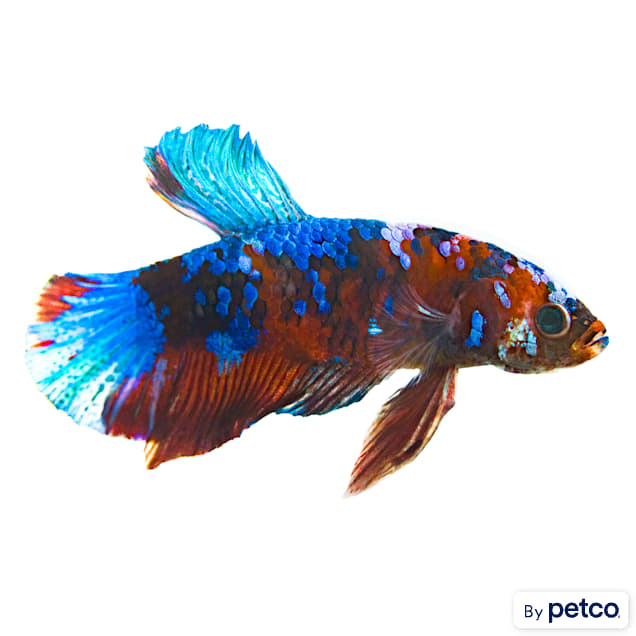The Ultimate Betta Fish Treatment Guide for New Family Pet Owners
The Ultimate Betta Fish Treatment Guide for New Family Pet Owners
Blog Article
Exactly How to Breed Betta Fish Successfully: Professional Strategies and Insights for Hobbyists Wanting To Increase Their Betta Collection
Reproducing Betta fish calls for a nuanced understanding of genes and ecological conditions, making it crucial for hobbyists to approach the process with both persistance and care. Producing an ideal breeding environment, choosing the right pairs, and observing the intricacies of their courtship habits are foundational steps that can substantially affect the end result.
Recognizing Betta Fish Genetics
Recognizing the genes of Betta fish is vital for successful reproduction, as it influences attributes such as color, fin shape, and behavior. Betta fish exhibit a varied variety of shades and patterns, mainly established by their hereditary makeup. The primary genetics in charge of pigmentation include the "B" gene for blue, "D" genetics for red, and the "C" gene for shade strength. Dog breeders can control these traits by picking certain parent fish that display preferred attributes.
Along with pigmentation, fin morphology is an additional considerable aspect of Betta genetics (betta fish). The sizes and shape of fins are affected by various genes, including those that establish whether the fins are short, long, or veil-shaped. Recognizing these hereditary variations helps dog breeders forecast the phenotypic results of their spawn
In addition, behavioral qualities such as aggression and territoriality can additionally be influenced by genetics. These habits play a vital duty in the reproducing process, as they can affect spawning success and the overall temperament of the resulting fry. By comprehensively comprehending these genetic concepts, dog breeders can make educated choices, inevitably improving their reproduction programs and accomplishing preferable outcomes.
Preparing the Reproduction Setting
Creating an optimum breeding atmosphere is essential for the successful recreation of Betta fish. The very first action in preparing this atmosphere is to choose an appropriate breeding storage tank, preferably ranging from 5 to 10 gallons.
Following, think about using a sponge filter or an air stone to supply gentle water blood circulation without developing strong currents that can stress the fish. It is necessary to set up plants or breeding cones to provide concealing spots and advertise comfort for the female during the spawning procedure. Floating plants, such as Java moss or water sprite, can additionally create an extra native environment while promoting bubble nest building by the man.
Prior to presenting the reproducing pairs, make certain the water is conditioned and devoid of harmful chemicals, such as chlorine or hefty steels. betta fish. Normal water changes should be performed to maintain optimal water quality, boosting the possibilities of effective breeding. With these preparations in place, the breeding environment will support the health and well-being of both Betta fish
Picking Breeding Pairs
Selecting the appropriate breeding pairs is crucial for attaining effective Betta fish reproduction. Healthy and balanced Betta fish exhibit vivid colors, clear eyes, and energetic behavior.
Temperament is an additional essential consideration, as Betta fish are understood for their hostile nature. It is suggested to choose a man and woman that display suitable characters to minimize stress throughout the reproducing procedure. A calm male can urge a smoother courtship, while a female that is as well aggressive might interrupt the procedure.
Hereditary history additionally plays a considerable role in the top quality of the children. Reproducing fish that are genetically diverse can decrease the danger of hereditary health and wellness issues and enhance the general vitality of the fry. It is beneficial to investigate the family tree of both the male and female, click for info concentrating on desirable qualities such as fin kind, color scheme, and size.
The Breeding Process
The reproduction process of Betta fish needs mindful preparation and attention to detail to guarantee a successful result. It is important to prepare an ideal reproduction storage tank, ideally a 5-10 gallon fish tank with a temperature preserved at 78-80 ° F. The storage tank should be furnished with a heater, filter (preferably sponge type to prevent strong currents), and a lot of aquatic plants for the lady to conceal.
Once the atmosphere is established, present the chosen breeding set to the storage tank, permitting them to adjust. Observe their behavior; the man will certainly display elaborate courtship routines, consisting of flaring his fins and developing a bubble nest. If here are the findings the woman reveals passion, she will certainly present vertical stripes showing readiness for spawning.
When the lady is responsive, the set will involve in a breeding accept, during which the male fertilizes the eggs. Keeping ideal water problems throughout this duration is crucial for the development of healthy Betta fry.
Caring for Betta Fry

Feeding Betta fry is vital, as they call for a diet plan high in healthy protein. They can be fed infusoria or fluid fry food, transitioning to carefully crushed top notch pellets as they expand. Feed little portions several times a day to urge healthy growth without overwhelming the storage tank with leftover food.

As they develop, monitor their growth closely and separate any kind of hostile people to avoid damage. By offering a supporting environment and proper nutrition, hobbyists can successfully increase Betta fry right into important link dynamic, healthy and balanced fish, eventually enhancing their reproduction ventures.
Verdict
Effective Betta fish reproduction needs precise focus to hereditary choice, environmental conditions, and care for the fry. By understanding the genes of Betta fish and preparing a proper breeding atmosphere, enthusiasts can boost the opportunities of creating vibrant, healthy and balanced children.
Report this page